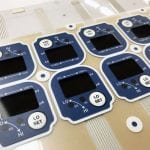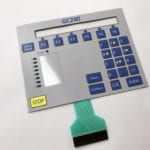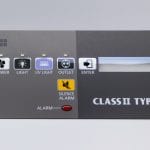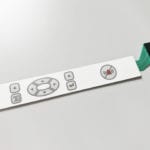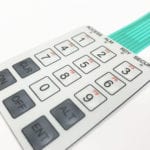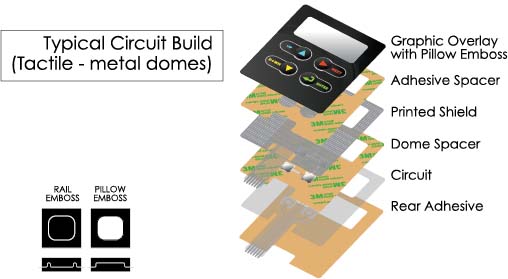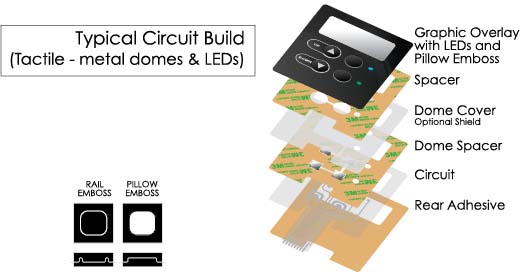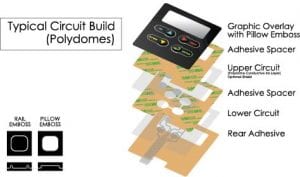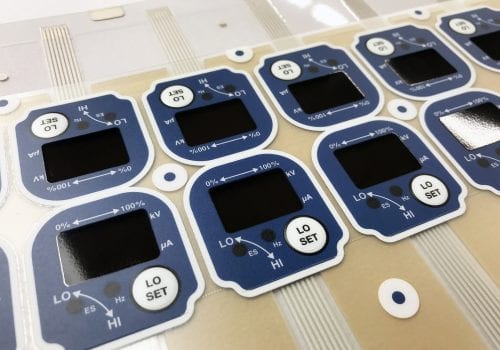
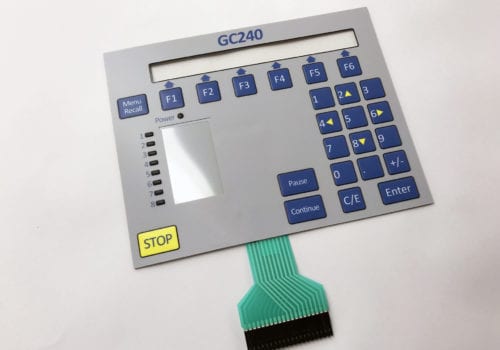
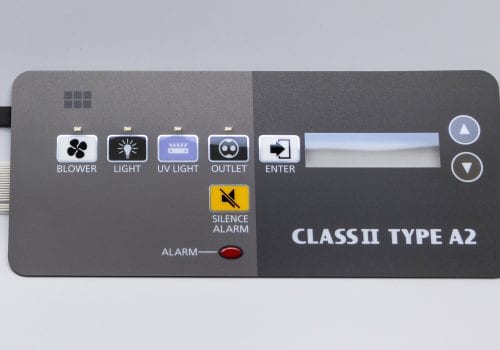
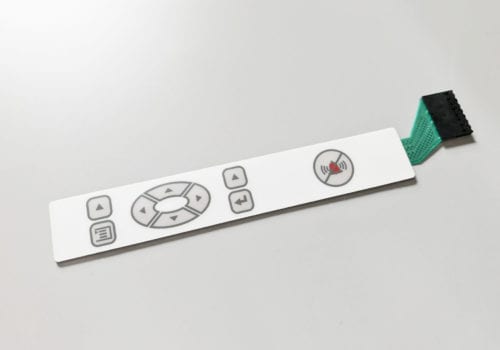

What are tactile membrane switches?
Membrane switches are user interfaces that allow users to interact with a circuit layer by pressing onto a membrane (rather than a button).
A membrane switch is made up of several layers, including a graphics overlay, adhesive layers, and a circuit layer (flexible printed circuit)
They provide a seamless, protective surface that allows users to interact with a device or machine.
All membrane switches need to offer feedback so that a user can confirm that the switch has been activated. Tactical membrane switches offer tactile feedback—users can feel when the switch has been activated.
This tactile feedback is often paired with other forms of feedback (visual and audio), but it may be used as the only form of feedback in some circumstances.
Metal domes are utilized to provide tactile feedback in our membrane switches. These domes are extremely long-lasting—they have a lifespan of 1 million+ actuations. In practice, this means they’ll last longer than most of the other parts of a given product.
Fortunately, very little actuation force is needed for the metal domes to touch the circuit layer. As such, our tactile switches are easy to activate while still providing user-friendly feedback. General Label stocks a wide range of metal dome sizes with variable actuation forces allowing you to select the perfect dome for your product.
Now that you understand what tactile switches are and how they work let’s explore the advantages and disadvantages of using them in your product.
Membrane Switch Terminology Guide
Pros and cons of using tactile membrane switches
To address the benefits of tactile switches, we must first cover the benefits of membrane switches as a whole. A membrane switch has:
- A sleek profile
- Excellent ingress protection (up to IP67)
- A graphics layer for logos, icons, instructions, and more
- High resistance to contaminants
- Compatibility with a variety of coatings
- Compatibility with a number of features, including backlighting
- And much more
All of the customizability you’d expect from a non-tactile membrane switch is available with a tactile switch.
With that in mind, we can explore some of the advantages of physical feedback.
When building your user interface, you may be interested in physical feedback if:
Other types of feedback alone are insufficient, such as in workplaces where distractions are common or the machinery being operated is hazardous
The user may need additional feedback (common in medical equipment)
Other types of feedback could distract, annoy, or even endanger the user and the people around them (common in military and medical applications)
The advantages of a tactile switch speak for themselves—more confirmation that a switch has been pressed almost always makes for a better user interface (up to a point).There are, however, a number of advantages to non-tactile switches:
- They can have a slimmer profile
- They’re less expensive to manufacture
- They have a longer lifespan
- They can operate more quietly (a tactile switch will often make a clicking or snapping noise when activated)
Now that you understand the advantages and disadvantages of tactile membrane switches—especially when compared to non-tactile switches—let’s explore the scenarios where a tactile switch is the right choice.
When you should use a tactile membrane switch
A tactile membrane switch is the perfect choice for any device where immediate, tangible feedback is required. Some of the most common use cases include:
Industrial applications, where safety is a top priority, devices are used frequently, and distractions may impede a user’s ability to register other sensory feedback
Outdoor applications, where weather conditions may limit a user’s ability to register non-tactile feedback
Medical devices, where rapid feedback is essential
Military applications, where other types of feedback may pose a safety risk and where immediate, responsive feedback is of the utmost importance
In short, you’ll want to use a tactile switch anytime instantly tangible feedback is important and in scenarios where the feedback from a non-tactile switch may be insufficient or detrimental.
Contact General Label for your tactile membrane switches
We offer both tactile switches and non-tactile membrane switches—we hope that, after reading this article, you know which one is best for you.
Even if you’re not sure which type of membrane switch is right for you, we can help. We offer all-in-one design, engineering, and manufacturing. We’ll build your membrane switch from the ground up, ensuring that it fits your product’s exact needs, specifications, and tolerances.
Medical devices, where rapid feedback is essential
Military applications, where other types of feedback may pose a safety risk and where immediate, responsive feedback is of the utmost importance
